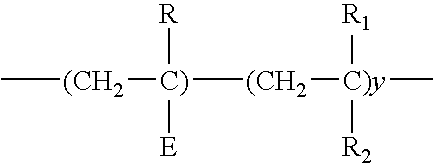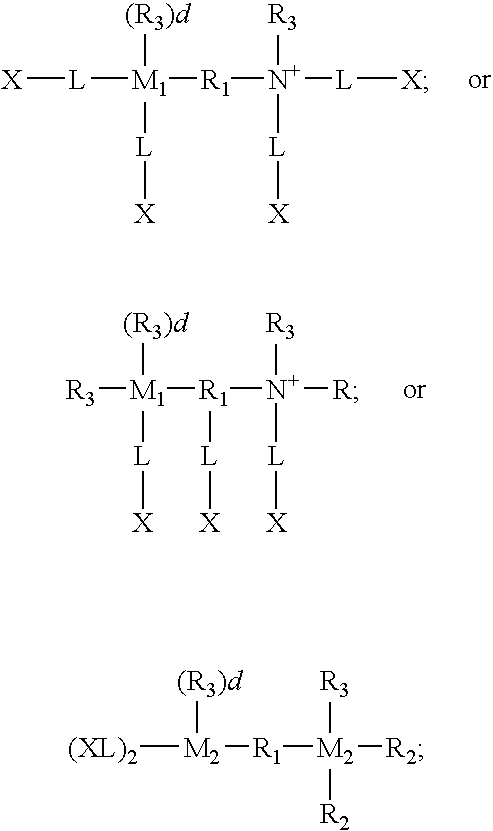Tablets with improved resistance to breakage
a technology of tablets and tablets, applied in the field of tablets, can solve the problems of low dimensional stability and breaking strength, insufficient adaptability of tablet compositions to packaging, shipment and handling, and breakdown of tablet structure, etc., to improve the resistance to breakage of detergent tablets, improve the dissolution profile, and improve the resistance to breakage.
- Summary
- Abstract
- Description
- Claims
- Application Information
AI Technical Summary
Benefits of technology
Problems solved by technology
Method used
Image
Examples
example 1
[0107] i) Binder A was prepared by heating sorbitol to 105° C. in a 250 ml beaker (Duran® from Schott Glass / Germany) using a laboratory hot plate supplied from IKA Labortechnik.
[0108] ii) Base powder F was prepared by mixing the ingredients of base powder F shown in table 2, in a concrete mixing drum (supplied by LESCHA) at atmospheric pressure and ambient temperatures.
[0109] iii) 2.4 g of molten binder A from step i) was sprayed onto 97.6 g of base powder F from step ii) at a temperature of 105 ° C. at a pressure of 200 kPa to form a composition.
[0110] iv) The composition was allowed to cool down to a temperature of 25° C. and then tableted using a GEPA press. 40 g of composition is introduced in a 41·41 mm square die, and the composition is pressed to obtain detergent tablet having a hardness of 63.74 N as indicated in a VK200 tablet hardness tester (supplied by Van Kell Industries, Inc.).
example 2
[0111] i) Binder B was prepared by mixing 28 g of solid sorbitol with 4 g of glycerin before heating the mixtures up to 105° C. in a 250 ml beaker (Duran® from Schott Glass / Germany) using a laboratory hot plate supplied from IKA Labortechnik. The resulting liquid mixture was stirred for 10 minutes.
[0112] ii) Base powder G was prepared by mixing the ingredients of base powder G shown in table 2, in a concrete mixing drum (supplied by LESCHA) at atmospheric pressure and ambient temperatures.
[0113] iii) 3.2 g of molten binder B from step i) was sprayed onto 96.8 g base powder G from step ii) at a temperature of 105° C. at a pressure of 200 kPa to form a composition.
[0114] iv) The composition was allowed to cool down to a temperature of 25° C. and then tableted as under example 1, iv).
example 3
[0115] i) Binder C was prepared by mixing 18.8 g solid sorbitol with 1.2 g of water before heating the mixture up to 105° C. in a 250 ml beaker (Duran® from Schott Glass / Germany) using a laboratory hot plate supplied from IKA Labortechnik. The resulting liquid mixture was stirred for 10 minutes.
[0116] ii) Base powder F was prepared as under example 1, ii).
[0117] iii) 2.0 g of molten binder C from step i) was sprayed onto 98.0 g of base powder F from step ii) at a temperature of 105° C. at a pressure of 200 kPa to form a composition.
[0118] iv) The composition was allowed to cool down to a temperature of 25° C. and then tableted as under example 1, iv).
PUM
| Property | Measurement | Unit |
|---|---|---|
| shear modulus | aaaaa | aaaaa |
| melting point | aaaaa | aaaaa |
| phase angle | aaaaa | aaaaa |
Abstract
Description
Claims
Application Information
 Login to View More
Login to View More - R&D
- Intellectual Property
- Life Sciences
- Materials
- Tech Scout
- Unparalleled Data Quality
- Higher Quality Content
- 60% Fewer Hallucinations
Browse by: Latest US Patents, China's latest patents, Technical Efficacy Thesaurus, Application Domain, Technology Topic, Popular Technical Reports.
© 2025 PatSnap. All rights reserved.Legal|Privacy policy|Modern Slavery Act Transparency Statement|Sitemap|About US| Contact US: help@patsnap.com


